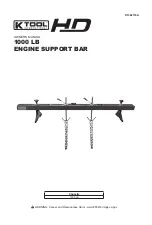
3-4-3 Zonal Operation Procedures
Zonal operation uses a zonal rotor for
density gradient centrifugation to
efficiently process large-volume samples.
Zonal operation involves the following
three zonal modes.
(1) With the door opened the rotor turns at
low-speed (* zonal speed) to allow loading of
samples.
(2) Samples are brought up to set speed
(high-speed) for separation.
(3) The rotor decelerates to zonal speed, the air leak
valve opens to vent the rotor chamber to enable
opening the door and removing the samples.
* Zonal speed: A rotor speed used when loading and unloading samples. Usually, the speed is set
to 3,000 rpm, but to enable an optimum speed setting, it is possible to set a speed
between 2,000 and 3,000 rpm in 100 rpm increments. For information on methods
for changing run speeds, refer to Section 3-4-6 (7).
CAUTION:
Zonal centrifugation includes operations where the rotor will turn while the door is open.
Be sure to read through the "Zonal rotor instruction manual" before operation.
NOTE
:
When zonal operation is set, zonal-specific temperature control (temperature control for
unpainted rotors) should be used. Use of rotors other than zonal rotors will lead to small
deviations in temperature indication. If you intend to use the TCF-32 continuous flow rotor
(a black-painted rotor) for zonal operation, contact a
Thermo
Fisher
Scientific
sales/service representative.
(1) Zonal Operation Procedures
Step
Touchscreen operation
Screen displays and notes
1
Prepare zonal operation as
described in the "Zonal rotor
instruction manual."
2
Press the
[ZONAL setting ]
button in the MENU screen.
●
Zonal
setting
screen appears.
3-4-3 Zonal Operation Procedures
Spe
ed
Fig. 3-4-3 Zonal Operation Modes
* Zonal speed
Time
[ZONAL]
button
[NORMAL]
button
(ZONAL Stop button)
3-66
















































